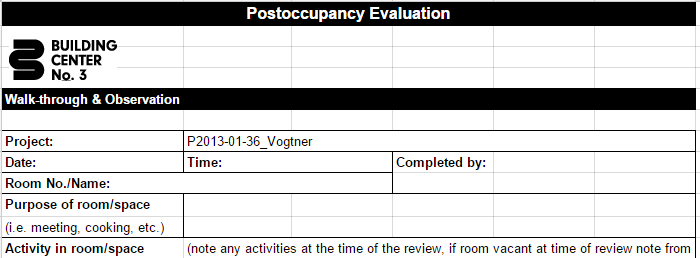This short video is meant to be a lighthearted introduction to some the technology in our office that we use on our projects. Specifically, drone technology. We have several drones that we deploy on certain projects to help us understand the site and the existing conditions: plants and trees, overhead wires, views, adjacent buildings and even the roof condition of an existing structure. We also use drones to augment our creative process by using still images taken from the drone and overlaying into a rendering of the project. Credits to my former colleagues, Pawel and Patricia for their voices and to Isabel Bozdogan for helping us finalize the video for upload.
Read MoreTypical Apartment Hotel Unit - One Bedroom
Drexel Apartment Hotel
The interiors team at BC3 completed the design for an apartment hotel in South Beach on Drexel Avenue—a three block walk from the beach. The design goals sought to create an elegant and contemporary hotel suite with warm tones and luxury finishes. For the overall flooring throughout the unit we chose Stone Athens Silver Cream from Ann Sacks. The all marble dining table is sourced from Knoll and the lighting above was Sferis pendant from Lumens. In the living area we chose Connect modular sofa system from Muuto and the coffee table was the Kyoto Low Round from Marelli.
In the kitchen we sourced the backsplash tile from Akdo and the countertops were Vega quartz. And lastly the cabinetry laminate was Smoky Brown Pear sourced from Formica.
Building Center No.3: Architecture firm in Miami; interior designer in Miami; landscape design in Miami.
Typical Apartment Hotel Corner Unit - One Bedroom
GRASSHOPPER BLOG POST [02]
We began working at the scale of a building and using grasshopper to develop parameters that generate building forms such as repetitive roof structures; patterns in facade screens, and the volumetric shapes of buildings on a site.
Making the Materials Boards [02]
Broward Specialty Center: BC3 Mini-Movie
Construction is completed for the Broward Specialty Center in Coconut Creek, FL. This project was a collaboration between Design Architect: 2 Point Perspective and Architect of Record: BC3; Landscape Designer: BC3. We put together a short 1 minute mini-movie that describes our approach to the landscape design from concept through installation. Design team at BC3 included: Jason Tapia, Paolo Ferrera, and Daniela R.
BC3 Completes Three Postoccupancy Evaluations on Built Projects
Miami - Building Center No.3 (BC3), an award winning interdisciplinary design firm in Downtown Miami began conducting Postoccupancy Evaluations (POE) on completed projects in the last quarter of 2014. The results from the first group of completed evaluations validate the firm’s strategy of reconnecting with past clients in order to assess the performance of design selections. BC3 concluded that it both improved the relationship with existing clients and also assisted the firm in learning about what products, systems and installations worked best.
AIA Definition of Postoccupancy Evaluation
The American Institute of Architects states: Postoccupancy evaluation services address how well a facility contributes to the productivity, satisfaction, and well-being of the occupants and the goals of the organization. Emphasis is on evaluating the functional quality and efficient use of living and working environments. In the case of new construction or renovation projects, actual functions are compared to the program objectives of the project.
Results and Solutions
In the three completed projects evaluated by BC3, owners and users reported overall satisfaction with the performance of the design but had encountered deficiencies in the installation of certain equipment and assemblies. “In one of the residential projects we were informed that the grout work where the stone kitchen counter meets the backsplash consistently formed a hairline crack. The installer had honored the warranty and corrected the work twice but the problem persists. Our office concluded that they were using a grout product that proved ineffective given the weight of the stone counter/base cabinets and the wood frame flooring construction that naturally expands and contracts with humidity. We did the research, called a grout manufacturer and recommended the installer use the alternative product which was designed to be more elastic,” says Jason Tapia AIA, Principal at BC3. “With our knowledge of design and construction we were able to troubleshoot and propose a solution that solved the problem and ensured that our design was not compromised by installation problems.”
“Another example occurred in a completed commercial project where there were two rooftop AC units serving two separate cooling zones. Zone 1 served the workplace areas and Zone 2 served mostly unoccupied spaces. The two zones were divide by a large beam that prevented ductwork from being shared between spaces on either side of the beam; so the President’s office was on the same side of the beam as the computer server room. Both the computer room and the President’s office shared the same thermostat because of their location in relation to the beam. The client reported to us that the server room would risk overheating when the thermostat was optimized for his own comfort. We identified the server room as both the problem and where an affordable and simple solution could be applied. The server was on a ground floor adjacent to an exterior wall. We proposed the client install a mini-split AC unit. The interior would have a wall mounted Air Handler Unit and on the exterior of the wall would be mounted the condenser unit. This solution allowed the client to quickly and cost effectively augment the air flow into the server room and establish an optimal set temperature for the equipment. The existing ductwork supplying the room remained unchanged and would simply supplement the air supply from the mini-split in the room,” says Tapia.
POE Methodology
As implemented at BC3 the POE is will be performed at key milestones in a completed project’s lifecycle: six months, three years, and five years. Of course, achieving these goals requires the cooperation of the client. “We found that most of our client’s were receptive to giving us the time to perform the evaluations which typically lasted an hour. In their eyes it demonstrates our commitment to good design,” says Tapia.
Step 1 Identify
Identify all of the stakeholders in design and construction process. This includes vendors and the General Contractor but may not necessarily include the subcontractors.
Step 2 Observe
The evaluator performs the walk-through observations of each space within the scope of the design contract. For example, in a conference room, the observer reviews the condition of the furniture, wall finishes, quality of the lighting levels (using a calibrated light meter), temperature comfort, carpet durability and the performance of any AV equipment. In a residential project a similar series of observations might be made for a kitchen or master bathroom--different materials and equipment, but the same evaluation goal: is it performing as intended?
Step 3 Interview
The questionnaire component of the evaluation encourages the client/user to rate their satisfaction with the project and the performance of the design team during the contract. This helps BC3 evaluate individual team members staffed on the project and how effective the office is in serving its clients.
Step 4 Address Problems
The last step is to be a problem solver. “The intent of the POE is not to assign blame on the design team, the General Contractor or the installers, but rather to assist the client in solving problems,” says Tapia. “If the items are covered under warranty then we try and assist the client in filing a claim with the installer or product manufacturer. We do all of this as part of the original scope of the project.”
AIA Miami Young Architect of the Year 2013
Principal Jason Tapia Earns AIA Miami Chapter "Young Architect of the Year" Award 2013
Read More


